“Money spent on good-quality gear is always money well spent.” ~ Tahir Shah
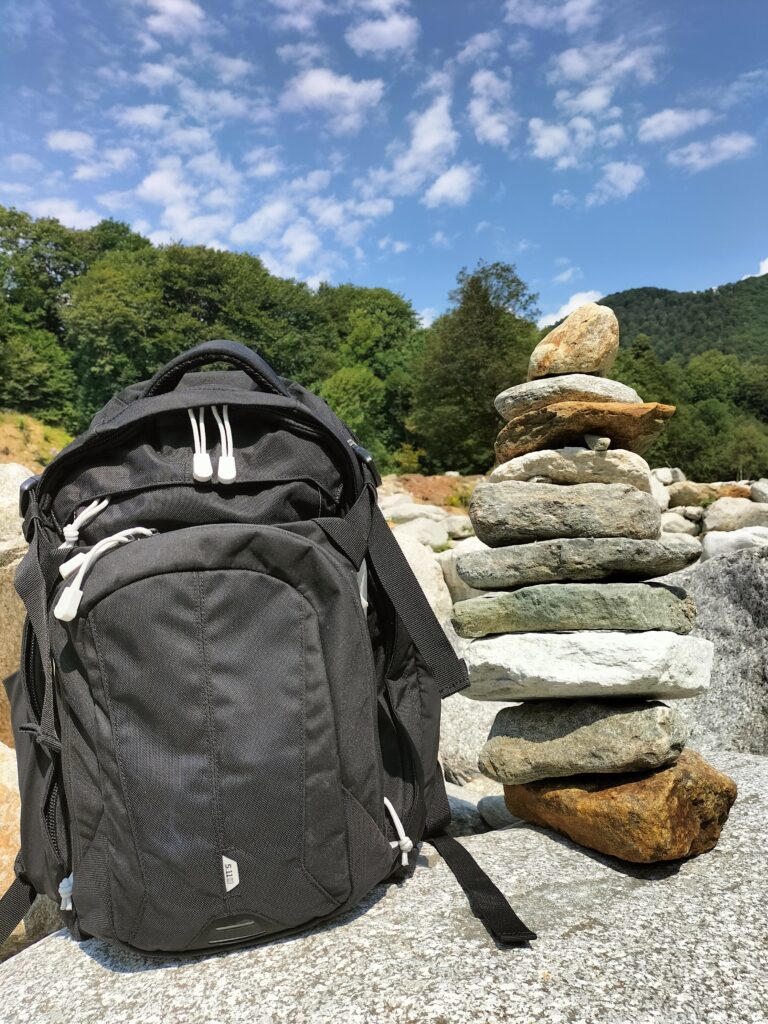
Introduction
Any prepper or survivalist is well aware of the fact that one backpack is never enough.
The “rules of engagement” of each situation require the adoption of specific gear to suit the situation’s needs.
This article is intended to be a short guide to identify some conditions that urban, suburban, and wilderness settings may have in common, specifically in relation to selecting backpacks that have the features to be useful in all three contexts.
As suggested in the quote above, if we think strategically about the gear we need to be perfectly adaptable from one scenario to another, we can definitely make good use of our money without giving up reliability or functionality wherever we are.
General Criteria
Speaking in broad terms, every single piece of our gear should always satisfy some general criteria:
• reliability
• resistance
• durability
• functionality
This is important because while poor quality gear can indeed save some money, the price to pay for gear you cannot depend on when caught in a miserable situation outdoors is always much too high.
A poor quality backpack can be immediately recognized by some unfortunately common attributes like:
• bad design
• poorly tailored pieces
• weak seals
• weak zippers
• wires which are visibly not properly fixed or cut
• weak materials (e.g. a Cordura fabric which is definitely too thin if destined for any use in the outdoors)
• poorly designed shoulder or back system
• light or nonexistent belt
Stay away from companies whose gear has even one of the above-mentioned bad features. Most of the time, such brands have absolutely no idea of what any outdoor activity really requires and perhaps have never tested their products.
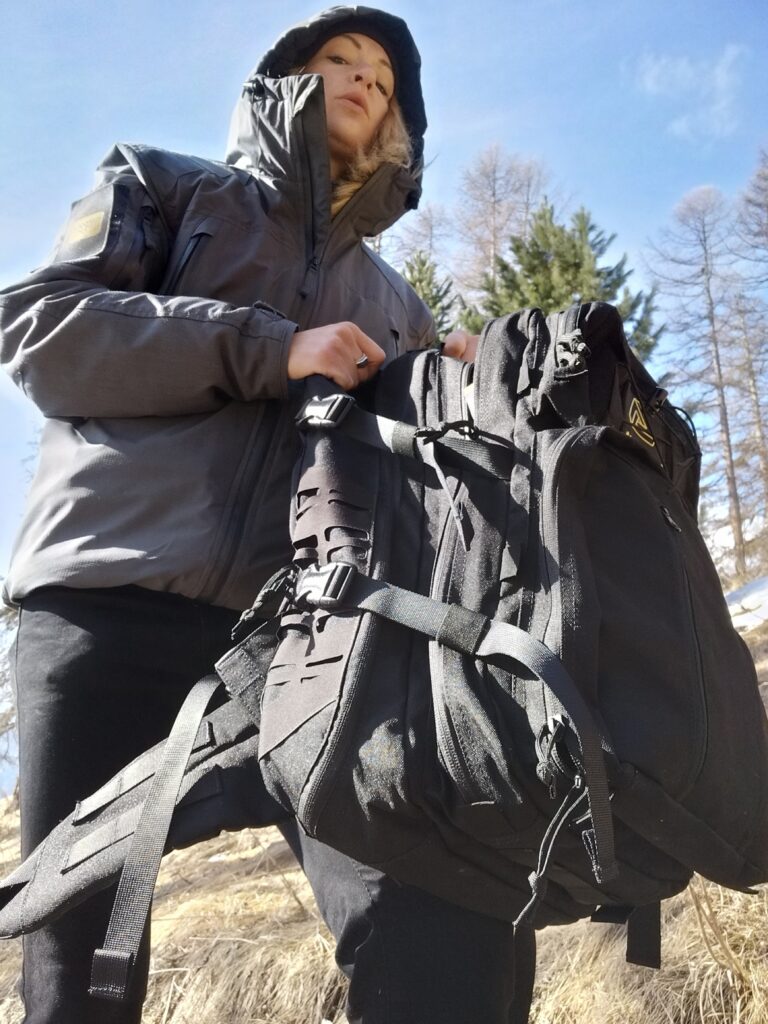
Specific Criteria
Needless to say, our choices for gear are largely dictated by our own personal experience, needs, potential disabilities, and so on.
Additionally, in the phase of selecting a backpack that could be employed in urban, suburban, and wilderness contexts, we should take into account factors like:
• shape
• capacity
• the items (and their dimensions) we want to place inside, including fragile items like a laptop
• adaptability/versatility
• presence of multiple external or internal pouches to better fix all our items
• presence of a pouch for a hydration sack
• option to attach additional pouches through a MOLLE system in the main body, on each side, or on the belt
• option to attach items outside the backpack, like a bivy tent, a mattress, etc.
• color (plain color or any camouflage patterns)
• presence of multiple handles
• presence of a ventilated air system for the back
• how it can be covered (not only for the rain but also from the perspective of evasion in an urban/suburban context)
Last but not least, some critical considerations should be made based on the specifics of the outdoor scenarios and weather conditions we may need to face, especially if we also want to employ the backpack abroad.

Traveling Abroad
Planning a trip using just one backpack is never a task to underestimate, especially if the trip includes transfers between airplanes, taxis, buses, trains, and so on. I am highly experienced with this, as I am often traveling via public transportation to reach the locations for my mantracking classes all over Europe.
Some good cutting-edge solutions which recently appeared on the market offer great quality in terms of reliability (especially in preventing any possible damage to our stuff) through dry bags designed and tailored as backpacks. Easy to carry, often featuring reliable shoulder straps, a good belt, roomy internal and external pouches, and quick cleaning—these backpacks, personally speaking, represent the ideal solution when I have to cover some distance or use them in the field.
The French company Zulupack offered me the opportunity to test several of their products, and despite my initial doubts about their comfort, I was quite surprised at the end of my first tests. In rainy countries like the Netherlands and Great Britain, they definitely saved all the contents I placed inside!
Some Features to Avoid
Tests, experience, and some careful thought will help you in determining backpack features you really want to avoid when moving from one scenario to another.
Some of these features are intrinsically connected with physical discomfort and details which are not only unnecessary, but even massively disturbing. I am referring to backpacks with a towering top lid, which can be annoying to carry because they put your neck in an unnatural position, causing neck pain or even damage.
Another often unconsidered factor is noise discipline. Some backpacks have zippers that are too jingly, creating unnecessary noise when our desire is not be noticed and to blend into the environment, urban or offgrid.
Last is the subject of flashy colors. For search and rescue, it is obviously good to have something easily visible, but for moving undetected, it is an obstacle to our purposes. By that token, survival instructor Dave Canterbury from the Pathfinder School, OH, suggests always carrying an orange, extra large t-shirt with us. It can be worn or attached to a backpack in case the need to be seen arises.
Conclusions – My Personal Choice
I actually use three different backpacks either in an urban/suburban environment or the wilderness.
My color of choice for all three of them is black. Not only do I like the nuance, but I can easily camouflage them with some OD green or Coyote/Tan backpack covers I can personally design and sew. Having them within easy reach, especially in one of the external pouches, is always smart to operate in a quick, effective manner.
The Jääkäri M by Savotta – 30 L
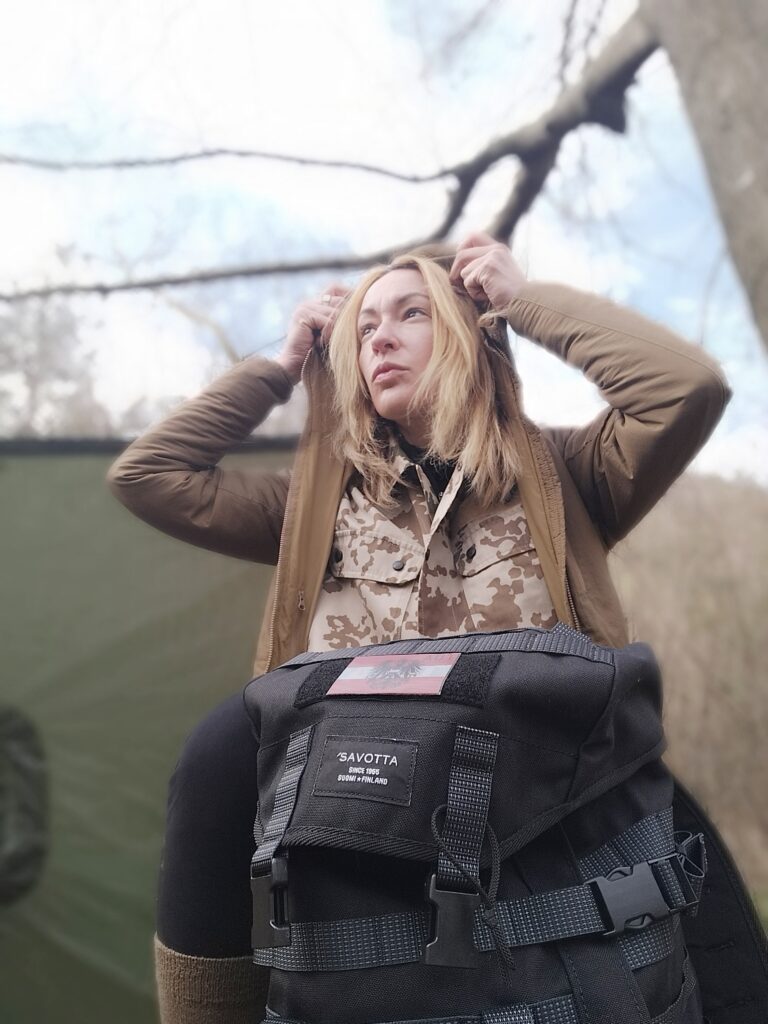
A typical “one room” backpack designed and tailored with great Cordura and extra attention to detail. The MOLLE system allows me to attach additional front/side pouches. Notable shoulder straps and belt make it extremely comfortable. An interior compartment, separate from the rest, can hold a laptop.
“Roger” Everyday Backpack by DEFCON 5 Tactical – 40 L
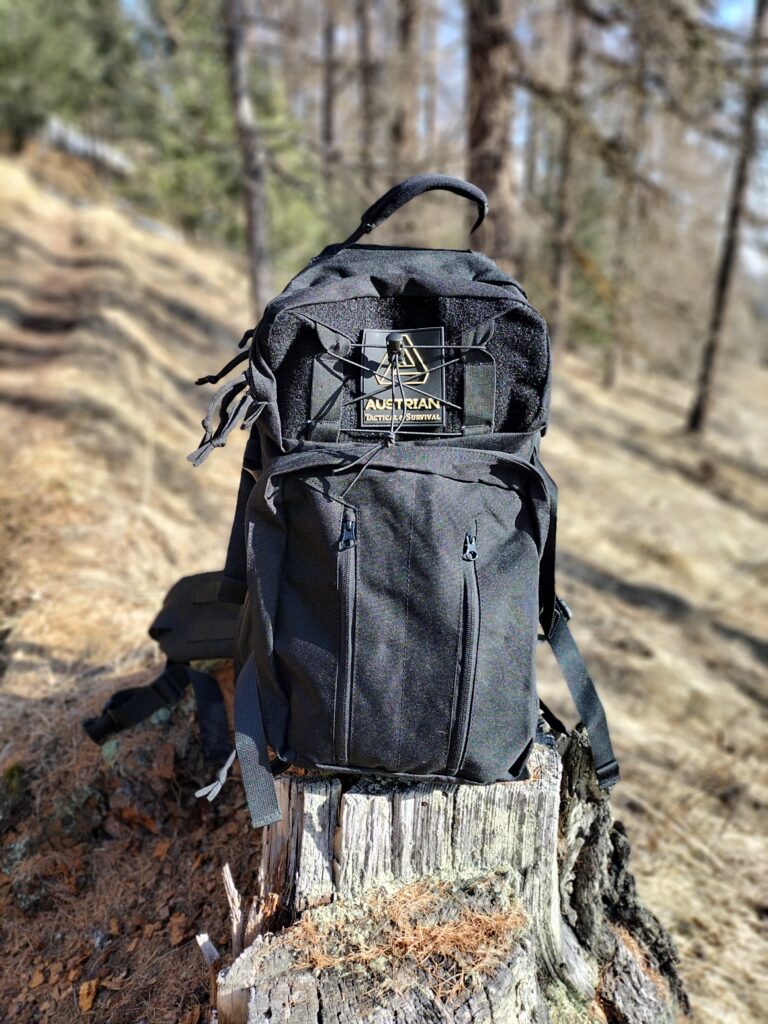
A more square-shaped backpack which features three different main rooms and a good quantity of internal small and medium pouches. Tough, reliable shoulder straps and a good quality belt ensure comfort even when carrying heavy loads.
5.11 Tactical COVRT18 2.0 – 32 L
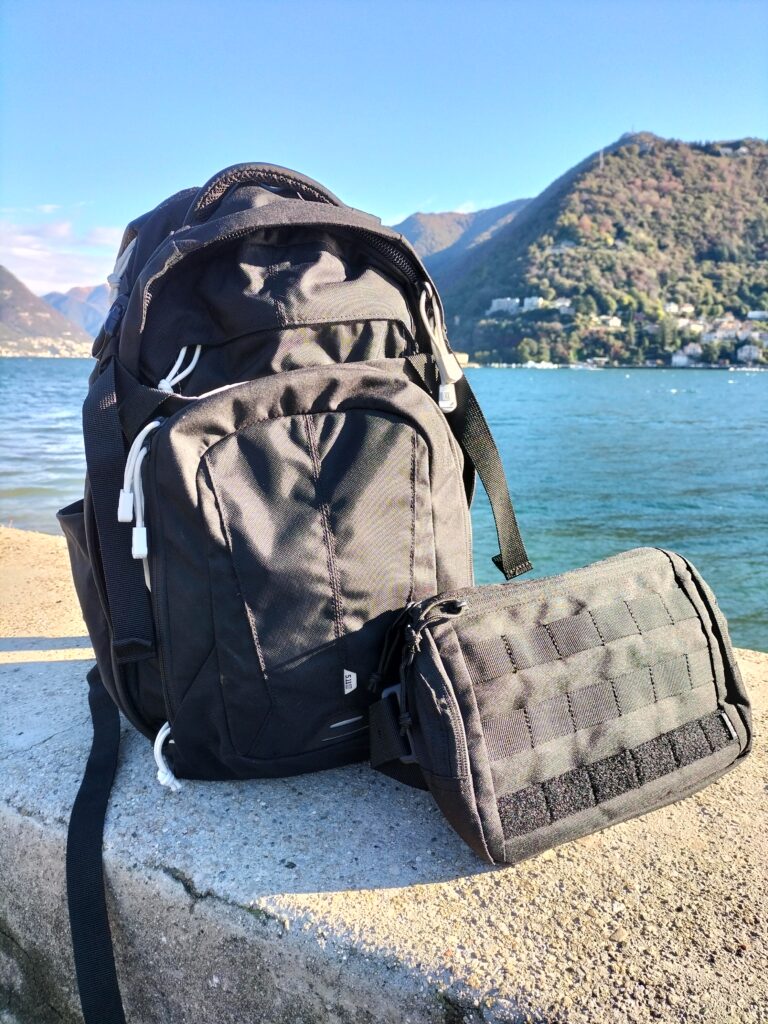
Definitely the most “urban” backpack I have. It features a more North Face-style half moon shape designed to contain mostly a laptop and some EDC items. Nevertheless, I tested it several times in the field, and it is indeed a tough if small backpack to have with you.
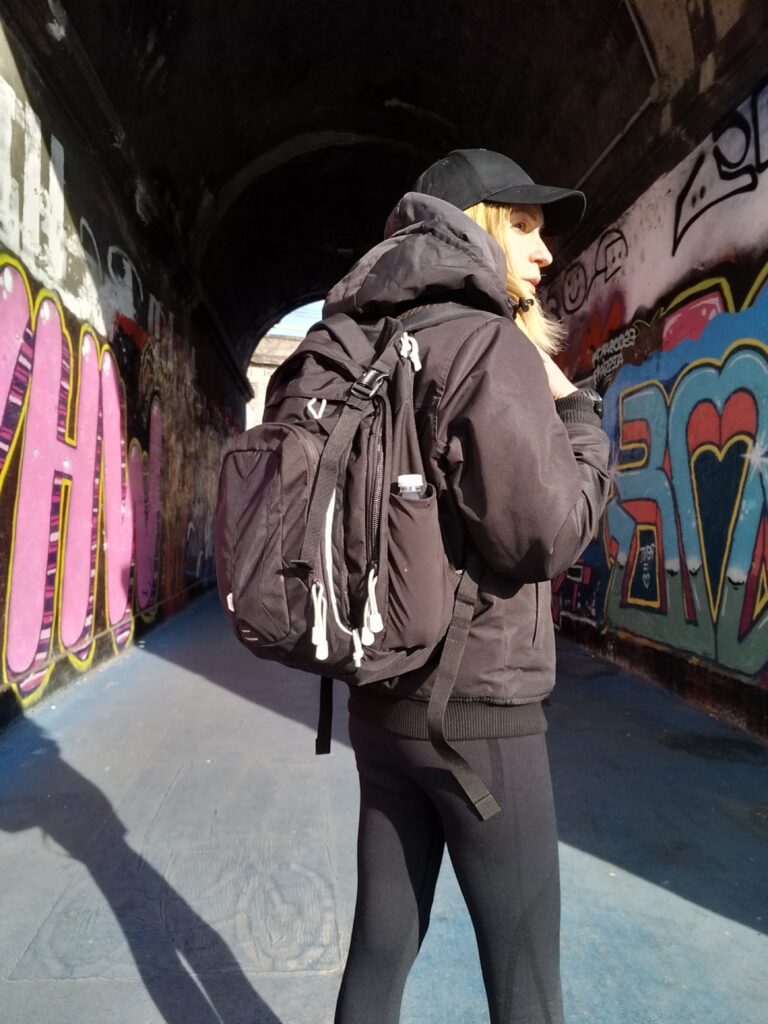
Kyt Lyn Walken
- Certified Wildlife Conservation Ranger at Conservation Ranger Operations Worldwide
- Official Representative & Instructor at Hull’s Tracking School
- Directora de Rastreo Humano por Dynamic Tracking (Spain)
- The way of Tracking – European Mantracking School
This article was optimized by Grace McCuthchen, Survival Dispatch Editor
